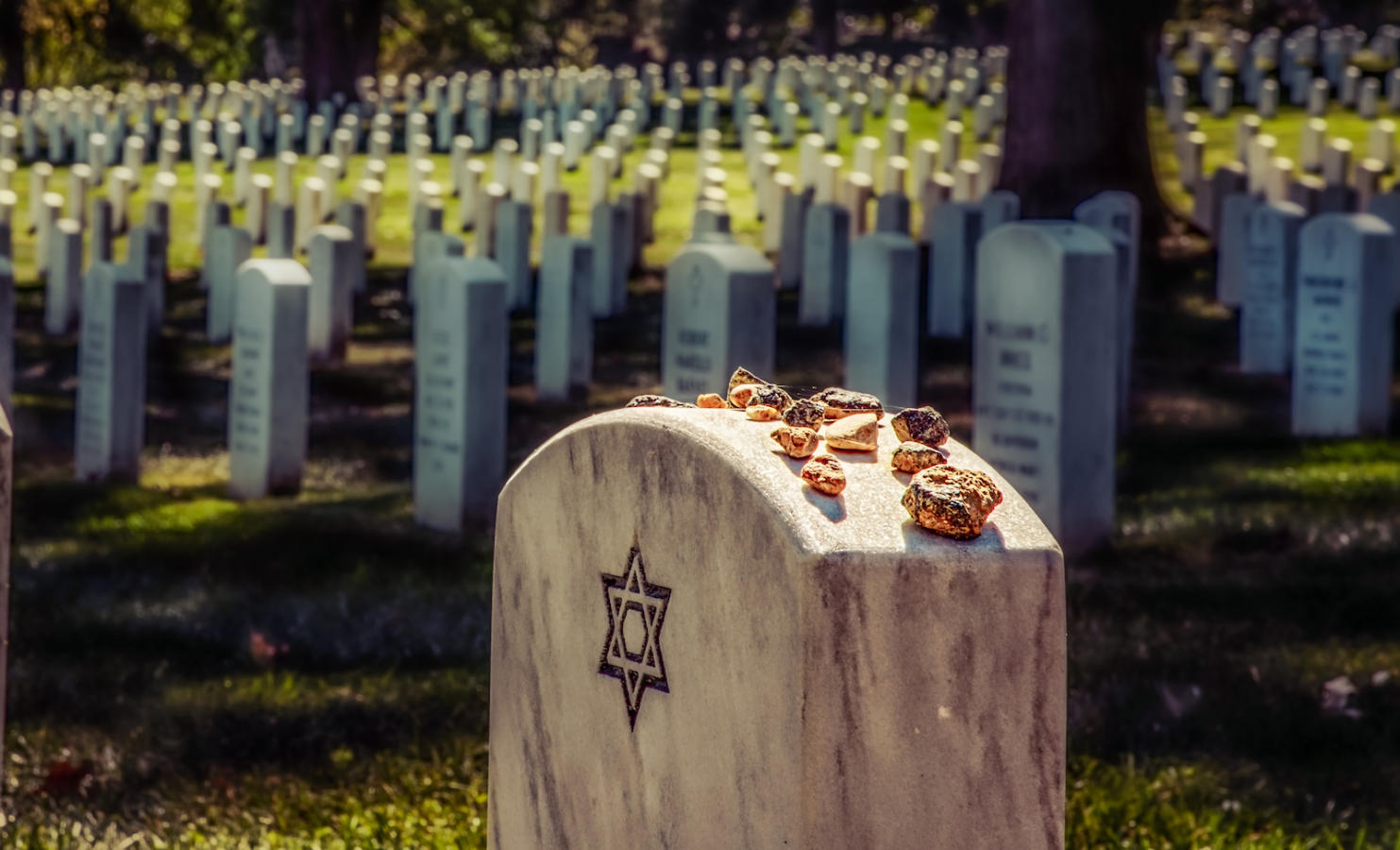One way of tracing the progressive disenchantment from the doctrine of bodily resurrection is to study the changes that were progressively introduced into the closing words of the Gevurot benediction of the Amidah.
Reform Judaism: Stress the Soul’s Afterlife
The earliest Reformers were loath to tamper with the traditional liturgy, but at a conference of Reform rabbis in Brunswick [Germany] in 1844, Abraham Geiger, the acknowledged ideological father of Classical Reform, suggested that his movement must deal with some liturgical doctrines that were foreign to the new age. One of these was the hope for an afterlife, which, he proposed, should now stress not the resurrection of the body but rather the immortality of the soul.
In the 1854 prayer book Geiger edited for his congregation in Breslau, he kept the original Hebrew of the benediction, but translated its concluding passage, “der Leben spendet hier und dort” (freely translated: “who bestows life in this world and the other”).
The champion of the radical wing of Classical Reform was David Einhorn (1809-1879). Einhorn was singularly responsible for transplanting Reform ideology from Germany to America. In his 1856 prayer book, Olat Tamid: Book of Prayers for Jewish Congregations, published for his congregation in Baltimore, Einhorn replaced the traditional Hebrew closing formula with a new version that praises God, “Who has planted immortal life within us.”
With your help, My Jewish Learning can provide endless opportunities for learning, connection and discovery.
That formula was later used in the 1895 Union Prayer Book, which became standard in all American Reform congregations until 1975, when it was replaced by The New Union Prayer Book, more commonly known as Gates of Prayer.
This latter prayer book, in turn, typically substitutes for the closing words of the benediction, the formula mehaye hakol (variously translated: “Source of life,” or “Creator of life.”)
These liturgical changes were echoed in the various platforms issued by American Reform rabbis as a way of giving their movement a measure of ideological coherence. An 1869 conference of Reform rabbis, held in Philadelphia, affirmed that “(t)he belief in the bodily resurrection has no religious foundation, and the doctrine of immortality refers to the after‑existence of souls alone.” This Philadelphia statement served as the basis for an even more influential statement of the principles of Reform, the Pittsburgh Platform, adopted in 1885.
The sixth paragraph of that statement asserts that “…the soul of man is immortal.” It continues, “(w)e reject as ideas not rooted in Judaism the belief…in bodily resurrection…”
Finally, the 1937 Columbus Platform states, “Judaism affirms that man is created in the image of God. His spirit is immortal.”
Still a third expression of the shift in thinking among Reform rabbis can be seen in theological treatises such as Kaufman Kohler’s Jewish Theology: Systematically and Historically Considered (republished, New York: Ktav Publishing House, 1968). Einhorn’s son‑in‑law, Kohler (1843‑1969) succeeded him as the champion of the radical wing of American Reform. He was responsible for convening the Pittsburgh Conference and for drafting its platform.
Kohler’s book devotes three full chapters to a historical overview of Jewish thinking on the afterlife and concludes that “…he who recognizes the unchangeable will of an all‑wise, all‑ruling God in the immutable laws of nature must find it impossible to praise God…as the ‘reviver of the dead,’ but will avail himself instead of the expression…, ‘He who has implanted within us immortal life'” (pp. 296‑297). For Kohler, God’s power reveals itself not in the miraculous but rather in the “immutable laws of nature,” which decree that all material things must die, that death is final, and that only the spiritual can live eternally.
Reconstructing Beliefs About Resurrection
Apart from American Reform, the other modern Jewish religious movement that dismissed bodily resurrection outright was Mordecai Kaplan’s Reconstructionism.
Kaplan (1881‑1983) was arguably American Judaism’s most innovative thinker. A thoroughgoing religious and theological naturalist [i.e. he rejected the “supernatural”], he propounded the view that Judaism was the “civilization” of the Jewish people. The Jewish people can then reformulate its beliefs and practices to make it possible for new generations of Jews to identify with their civilization.
In 1945, Kaplan published his Sabbath Prayer Book, which carried his ideological commitments into the liturgy. His introduction to the prayer book lists the “Modification of Traditional Doctrines” reflected in his work, and one of these is the doctrine of resurrection (pp. xvii‑xviii). Kaplan rejects resurrection, accepts spiritual immortality, but refuses to impose it on the traditional liturgical text of the Amidah. In place of the traditional formula, he uses a phrase from the High Holiday liturgy that praises God “…Who in love rememberest Thy creatures unto life.”
This was but one of the many changes in the traditional liturgy that led to Kaplan’s excommunication by a group of Orthodox rabbis. A more recent Reconstructionist prayer book, Kol Haneshamah (1994), replaces Kaplan’s phrase with a version of the Reform formula, “Who gives and restores life.” A literal translation of the Hebrew mehaye kol hai, by contrast, would read simply “who gives life to all living things.”
Conserve the Hebrew, Shade the English
The Conservative Movement in contemporary American Judaism was born in 1886. As its name implies, it was a conservative reaction to what it viewed as the excesses of American Reform and its Pittsburgh Platform. In contrast to Reform, this movement generally avoided ideological self‑definition, largely because it perceived itself to be a broad coalition of the more traditionalist elements in American Judaism.
The various prayer books published by the Conservative movement generally (but not always) avoid tampering with the traditional Hebrew liturgy. The movement’s preferred strategy for dealing with troublesome doctrines embodied in the liturgy is to retain the Hebrew text but to shade the translation to reflect a more acceptable reading of the doctrine.
As an instance of this practice, the 1945 Sabbath and Festival Prayer Book, omnipresent in Conservative congregations in the middle decades of this century, translates the concluding words of the Gevurot benediction, “who calls the dead to life everlasting.”
In the foreword to this prayer book, Robert Gordis, the Conservative rabbi and scholar who chaired the committee that edited the prayer book, justifies this translation by noting that this rendering of the traditional Hebrew “…is linguistically sound and rich in meaning for those who cherish the faith in human immortality, as much as for those who maintain the belief in resurrection” (pp. viii‑ix).
Gordis’ personal predilection for spiritual immortality over bodily resurrection is recorded in his A Faith for Moderns (revised and augmented edition, New York: Bloch Publishing Co., 1971): “The facet in man’s nature which is deathless, the vital spark, the breath of life, we call the soul” (pp. 251‑252).
A more recent prayer book for use in Conservative congregations, Siddur Sim Shalom (1985), is more aggressive in its liturgical changes, yet it retains the traditional Hebrew formula for the Gevurot benediction, which it translates “give life to the dead,” or more freely, “Master of life and death.”
Orthodoxy: Revival in All Languages
Finally, all prayer books for use in contemporary American Orthodox congregations primarily the various editions compiled by Philip Birnbaum (New York: Hebrew Publishing Co.) and those under the Art Scroll imprint (New York: Mesorah Publications, Ltd.), retain the traditional Hebrew text of the liturgy and translate it literally as either “…who revives the dead” or “…who resuscitates the dead.”
By the middle of the twentieth century then, the entire liberal wing of the American Jewish religious community had abandoned the doctrine of resurrection, either explicitly by modifying the Hebrew liturgy, implicitly by shading its translation in favor of spiritual immortality, or by adopting a deliberately ambiguous reading of the Hebrew.
Reprinted with permission of The Continuum International Publishing Group from
The Encyclopedia of Judaism
, edited by Jacob Neusner, Alan Avery-Peck, and William Scott Green.



